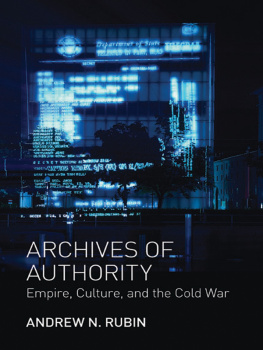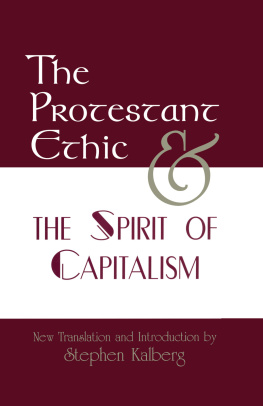S TUDIES IN
PERSPECTIVE  STUDIES IN
STUDIES IN
PERSPECTIVE JAN VREDEMAN DE VRIES WITH AN INTRODUCTION BY ADOLF K. PLACZEK AVERY LIBRARY COLUMBIA UNIVERSITY DOVER PUBLICATIONS, INC. MINEOLA, NEW YORK Copyright Copyright 1968, 1996 by Dover Publications, Inc. All rights reserved. Bibliographical NoteStudies in Perspective, first published by Dover Publications, Inc., in 1968 under the title, Perspective, and republished in 2010, is a republication of the work originally published by Henricus Hondius in Leiden in 1604 and (Pars altera) 1605. The text which accompanied the illustrations has been omitted for this reprint.
A new Introduction was written specially for the 1968 edition by Adolf K. Placzek. The translations appearing on pages vi, viii, x, xii, and 50 are by Stanley Appelbaum. DOVER Pictorial Archive SERIES This book belongs to the Dover Pictorial Archive Series. You may use the designs and illustrations for graphics and crafts applications, free and without special permission, provided that you include no more than four in the same publication or project. 11501.) However, republication or reproduction of any illustration by any other graphic service, whether it be in a book or in any other design resource, is strictly prohibited. International Standard Book NumbereISBN-13: 978-0-486-15427-5 Manufactured in the United States by Courier Corporation 47332501 www.doverpublications.com Contents INTRODUCTION TO THE DOVER EDITION Very little is known about Jan (or Hans, as he is often called) Vredeman de Vries, the architect-painter-engraver whose impact and influence throughout Northern Europe was to be so marked. International Standard Book NumbereISBN-13: 978-0-486-15427-5 Manufactured in the United States by Courier Corporation 47332501 www.doverpublications.com Contents INTRODUCTION TO THE DOVER EDITION Very little is known about Jan (or Hans, as he is often called) Vredeman de Vries, the architect-painter-engraver whose impact and influence throughout Northern Europe was to be so marked.
We know that he was born in 1527 in Leeuwaarden, a town in Dutch Friesland. He was trained as a painter, but soon became interested in architecture, at the time when the great Italian Renaissance movement finally reached the Netherlands. For a while he lived in Antwerp, but had to flee from the Duke of Albas edict in 1570 against heresy and heretics at the height of the Spanish war. He went back to Antwerp a few years later, then worked in Germany as an architect, tried to form a painters guild in Danzig, later turned up at the famous court of the Emperor Rudolph II in Prague and finally returned to Holland, where he lived with his painter-son Paul. The date of his death is uncertain, probably around 1604, at the time of the publication of this book. Vredemans unsettled life is a true reflection of the turbulent time he lived inparticularly turbulent in his native country, which had to fight so long and so hard for its religious freedom and national independence.
His work is an equally true reflection of the artistic cross currents of his time: Northern and Southern elements, Gothic, Renaissance, Baroque and Mannerism are all represented in a powerful combination expressive of the Netherlands of the late sixteenth century. And since the Netherlands were in many ways the center of the Northern Renaissance, Vredeman can certainly be considered a principal messenger of the new style throughout Germany, Scandinavia and even the British Isles. Vredeman worked as an architect, but no building known surely to be his has survived. His paintingsmany of architectural vistasare of historical interest, but not much more. His true and great importance rests on his numerous engravings, in which he opened new avenues of architectural invention and architectural representation. His books are fantasies and textbooks, dreams and pattern-books for apprentices, avant-garde messages and popular picturesall at the same time.
From 1555 to his death the indefatigable master produced publication after publication on architectural topics, the flow of which did not cease even at his death, since restrikes and new editions continued to appear from Amsterdam and Antwerp. His early engravings deal with scrolls, cartouches, grotesques and arabesques. He then turned to the five orders of architectureas we know, a great preoccupation of his time. His attempt to popularise classic forms in the North, which was slow to accept them, earned him the name of "Flemish Vitru-vius." In 1565 his first series on gardens appeared: formal designs which had a most definite influence on landscape architecture. His early attempts in perspective (1568) were not successful (this series has erroneously been taken for the first edition of his later book). His manneristic architectural fantasies appeared under the title Variae Architecturae Formae in 1601.
His last and greatest work is his Perspective (or, as he calls it in the subtitle, the "most famous art of eyesight"), published in The Hague and in Leiden in 16041605 by the great publishing house of Hondius. The book is dedicated to Prince Maurice of Nassau, Stadholder of Holland and Zeeland, head of the newly established independent country, younger son of the famous William the Silent. It consists of two parts, 49 plates in the first (33/34 being a double plate) and 24 in the second, with short comments on each plate, the whole introduced by a preface of only a few words, since, as Vredeman charmingly says, he did not want to be tiresome or tedious to his readers, but would let his illustrations speak for themselves. The rules of perspective were, of course, by then nothing new. They had been formulated in the fifteenth century in Italy by Piero della Francesca, Leon Battista Alberti and others, had been refined in the sixteenth century by Serlio and Vignola and were thoroughly familiar to Leonardo, Raphael and all the other great Italian painters. In Germany Albrecht Drer had worked with perspective, and it is Drer on whom Vredeman, according to his own statement, based much of his knowledge.
The basic principles from which Vredeman proceeds seem quite obvious. They consist in the establishment of vanishing points into which all lines, which in actual fact are parallel to each other, converge. All vanishing points rest on a vanishing line or horizon line (that is, assuming that we are looking straight ahead, not upward or downward). The forward vanishing point, or, as he calls it, the "eye point," need not be in the center, but can be to the right or left of center, depending on the position of the viewer. Vredeman then reiterates the fundamental rule of all perspective. As he puts it: whatever is above the horizon cannot be seen from above, and whatever is below the horizon cannot be seen from below.
He establishes a gridwork of five linear components into which, to achieve an illusion of space, all objects can be placed. These five linear components are: 1. The base line that defines the level on which the imaginary viewer or painter stands. 2. The perpendicular lines that frame the whole system. 3.
The horizon line, already mentioned. 4. The parallel lines, or lines of foreshortening, that converge at the "eye point" or central vanishing point. 5. The diagonal or oblique lines that converge at distance points, or secondary vanishing points. Vredeman also states that, throughout his book, he has assumed the unchanging eye level of a rather small-sized man, five and a half feet highan assumption not borne out by some of his plates (I-14, I-16), which appear to represent a far higher angle of vision.
This man, incidentally, appears in Plate I-30 in personas both the viewer and viewed. Vredeman, like most other masters of perspective, also has his viewer look up into interior architectural space, into a dome or a vault (as in Plates I-37 and I-38) or down a many-tiered stairwell (I-39). Exciting views result. Here the rules of perspective are, of course, somewhat differently applied. Only one vanishing point and no horizon line is needed, and this vanishing point has nothing to do with eye level, but depends only on the position of the viewer below or above, and the direction in which he is looking. The beauty of the plates and the ingenuity and clarity of Vredemans demonstrations are self-evident.
Next page
















 STUDIES IN
STUDIES IN